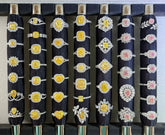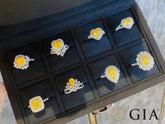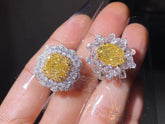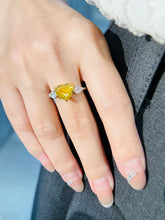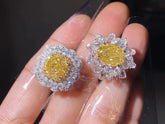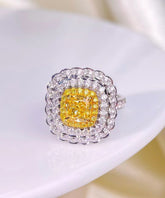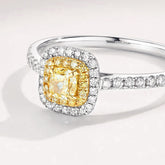9.GIC: stands for 'Gemological Institute of Colombo,' located at 11 Havelock Road, Colombo 5, Sri Lanka. It is backed by the Sri Lankan government and holds a significant position in the country's gemstone certification landscape, comparable to China's NGTC (National Gemstone Testing Center) in terms of importance and authority.

▲GICcertificate
10.CD:refers to certificates issued by C.DUNAIGRE, a Swiss gemstone consulting firm. These certificates are commonly encountered at high-end jewelry auctions but do not have an official website.

▲CDcertificate
11.NGTC:or the National Gemological Training Centre, is the National Gemstone Testing Center of China. It is the premier institution for diamond testing in China and can also test other types of gemstones and jade. Known for its rigorous standards, NGTC is the preferred certification body in China. For example, amber samples may require partial destructive testing. The fees are generally higher, and the processing time is slower compared to other Chinese institutions.

▲NGTCcertificate
12.GIT :refers to the Gem and Jewelry Institute of Thailand, which operates as a testing station affiliated with a Thai university. It is reputed to have equipment comparable to GRS (Gem Research SwissLab AG) and is highly regarded by locals in Thailand for its authority in gemstone testing and certification.

▲GITcertificate
13.GGT:or Global Gem Testing Laboratory, is an international gemstone testing laboratory. You can find more information about them on their official website at http://www.ggtlaboratory.com.

▲GGTcertificate
14.CDETC :stands for Colombian Gemological Institute (Centro de Desarrollo Tecnológico del Carbón y la Metalurgia), which is highly regarded as a leading authority in emerald certification worldwide. However, its certificates are not as widely circulated in the global gemstone market compared to certifications from Europe and the United States.

▲GUILDcertificate
15.GUILD:the Gemological Institute of the United States, was founded in Los Angeles in 1980. Since then, it has specialized in the identification, enhancement treatments, color grading, and origin research of colored gemstones. GUILD issues two main types of certificates: various types of testing reports including Origin Reports, Grading Reports, and Identification Reports, as well as Advanced Reports.

▲CDETC certificate
16.CGL:or Ceylon Gem Laboratory, is a gemstone laboratory based in Sri Lanka. It is notable for being a member of GIA (Gemological Institute of America) and is well-regarded and popular in the market for its efficient and rigorous certification process.

▲CGL certificate
17.GIS:or GISGEM S.p.A. Laboratory, is an Italian gemstone laboratory.

▲GIScertificate
18.FGA:or the Gemmological Association & Gem Testing Laboratory of Great Britain, is a well-known certification in the gemstone industry. However, its certificates are not widely circulated in the market.

▲FGA certificate
19.TGL: (Japan) stands for Tokyo Gem Laboratory.

▲TGL certificate
20:TGL (Sri Lanka):or Tourmalinelanka GemLab, is a gemstone certification laboratory in Sri Lanka. While its certificates are less commonly seen, it is known for its accurate determination of whether gemstones have undergone heat treatment.

▲TGL certificate























